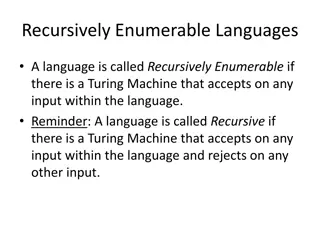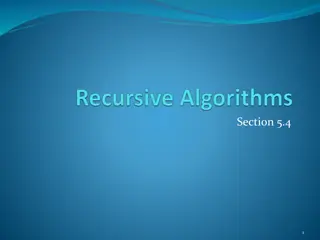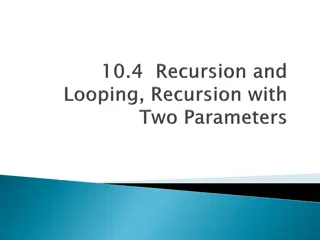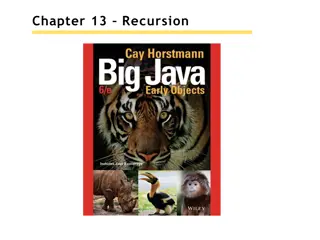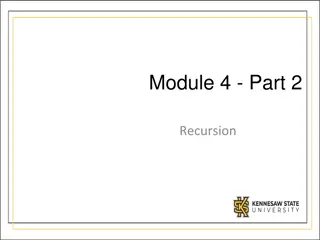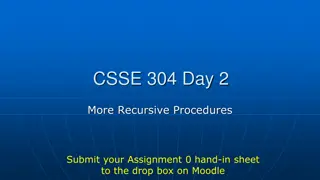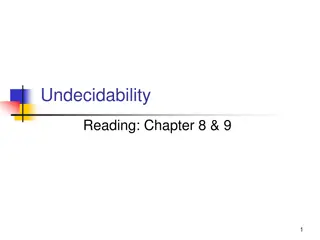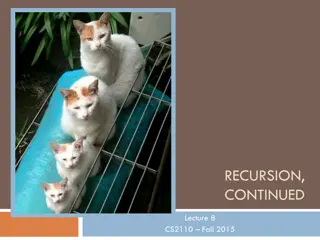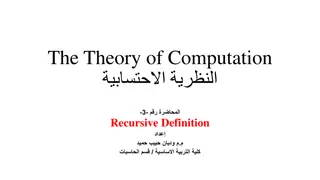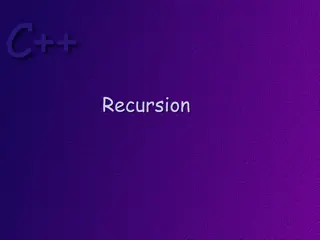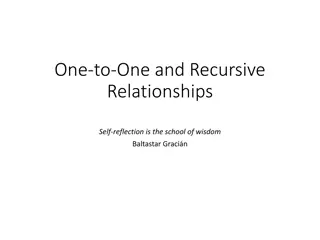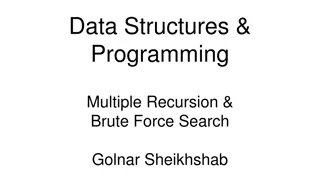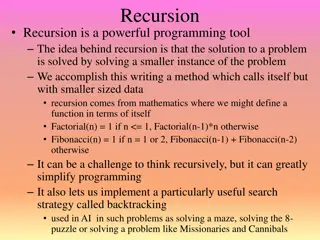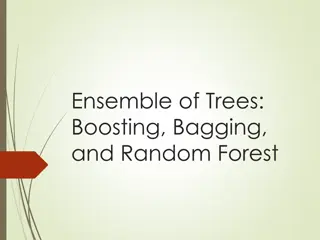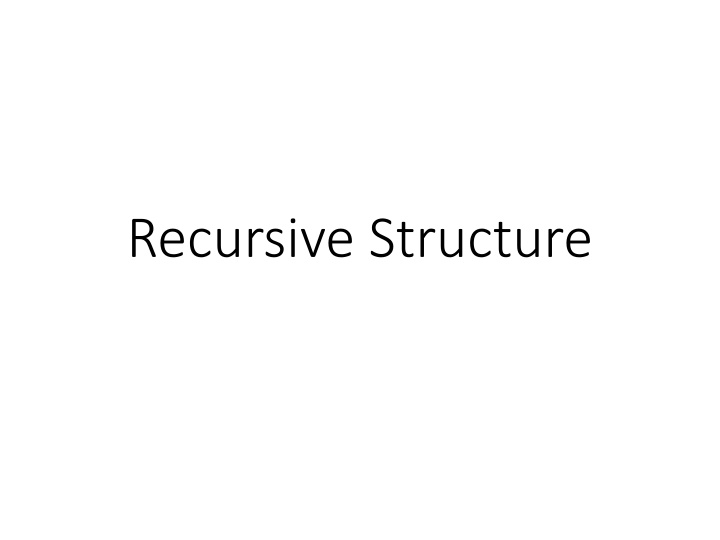
Understanding Recursive Models in Sentiment Analysis
Explore the concept of recursive structures and how they are applied in sentiment analysis through recursive neural networks. Dive into the syntactic structures, meaning compositions, and model interpretations of very good, good, bad, and neutral sentiments. Discover the interplay between words and vectors in creating nuanced sentiment classifications.
Download Presentation

Please find below an Image/Link to download the presentation.
The content on the website is provided AS IS for your information and personal use only. It may not be sold, licensed, or shared on other websites without obtaining consent from the author. If you encounter any issues during the download, it is possible that the publisher has removed the file from their server.
You are allowed to download the files provided on this website for personal or commercial use, subject to the condition that they are used lawfully. All files are the property of their respective owners.
The content on the website is provided AS IS for your information and personal use only. It may not be sold, licensed, or shared on other websites without obtaining consent from the author.
E N D
Presentation Transcript
Application: Sentiment Analysis sentiment h0 h1 h2 h3 f f f f g word vector x1 x2 x3 x4 Word Sequence h3 g Recurrent Structure Special case of recursive structure f same dimension h1 h2 Recursive Structure f f How to stack function f is already determined x1 x2 x3 x4
Recursive Model syntactic structure How to do it is out of the scope not very good word sequence: not very good
Recursive Model syntactic structure By composing the two meaning, what should the meaning be. not very good Dimension of word vector = |Z| Meaning of very good V( very good ) Input: 2 X |Z|, output: |Z| f V( not ) V( very ) V( good ) not very good
Recursive Model syntactic structure V(wA wB) V(wA) + V(wB) not : neutral not very good good : positive Meaning of very good not good : negative V( very good ) f V( not ) V( very ) V( good ) not very good
Recursive Model syntactic structure V(wA wB) V(wA) + V(wB) : positive not very good : positive : negative Meaning of very good V( very good ) f network V( not ) V( very ) V( good ) not very good
Recursive Model syntactic structure not good not bad not very good f f Meaning of very good not good not bad V( very good ) : reverse another input f not V( not ) V( very ) V( good ) not very good
Recursive Model syntactic structure very good very bad not very good f f Meaning of very good very good very bad V( very good ) : emphasize another input f very V( not ) V( very ) V( good ) not very good
ref - 5 classes ( -- , - , 0 , + , ++ ) output g Train both V( not very good ) f f g f V( not ) V( very ) V( good ) not very good
Recursive Neural Tensor Network ? = ? W f Little interaction between a and b ? ? ??????? x W ?,? xT = ? +
Experiments 5-class sentiment classification ( -- , - , 0 , + , ++ ) Demo: http://nlp.stanford.edu:8080/sentiment/rntnDemo.html
Experiments Socher, Richard, et al. "Recursive deep models for semantic compositionality over a sentiment treebank." Proceedings of the conference on empirical methods in natural language processing (EMNLP). Vol. 1631. 2013.
Matrix-Vector Recursive Network f inherent meaning how it changes the others = = = ? WM W = Informative? 0 1? ? ? ? ? Identity? Zero? 1 0 not good
ht-1 ht Tree LSTM LSTM Typical LSTM mt-1 mt Tree LSTM xt h3 m3 LSTM h1 m1 h2 m2
More Applications Sentence relatedness NN Recursive Neural Network Recursive Neural Network Tai, Kai Sheng, Richard Socher, and Christopher D. Manning. "Improved semantic representations from tree- structured long short-term memory networks." arXiv preprint arXiv:1503.00075 (2015). Sentence 2 Sentence 1

